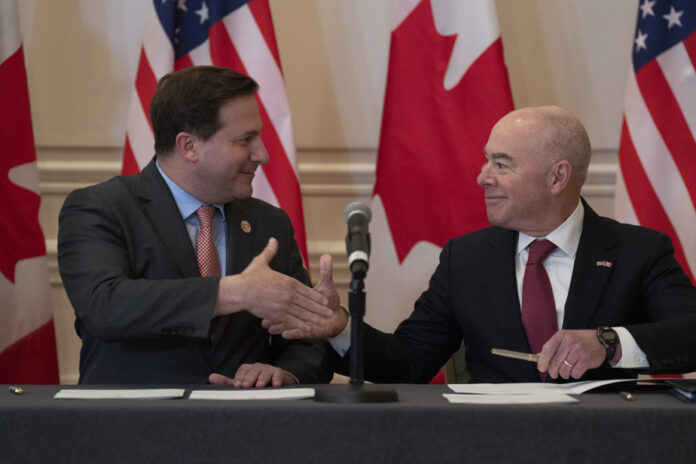Joint investigations into firearm smuggling, exchange of information between police forces and tracing of phantom weapons. Public Safety Minister Marco Mendicino and US Homeland Security Secretary Alejandro Mayorkas are stepping up their fight against illegal firearms.
“We are perfectly aligned – perfectly aligned – when it comes to our goals for the safety of our respective communities,” Mr. Majorkoras said following the Canada-US Cross-Border Crime Forum, held in Ottawa on Friday.
This ministerial forum was reinstated last year after being abandoned in 2012 under the Conservative government of Stephen Harper and the presidency of Barack Obama. It also brings together the Minister of Justice, David Lametti, and the Attorney General of the United States, Merrick Garland, as well as the police forces and agencies responsible for public safety on both sides of the border.
Two new agreements have been concluded between the Canada Border Services Agency (CBSA), the United States Bureau of Alcohol, Tobacco, Firearms and Explosives (ATF) and the United States Drug Enforcement Agency (DEA). Another agreement dating from 2006 between the Royal Canadian Mounted Police (RCMP) and the ATF needs to be updated. The fourth agreement between the RCMP and the DEA was already signed in November 2022.
“Thanks to this collaboration, we will be able to trace [phantom weapons] more quickly,” explained Minister Mendicino. There will be a sharing of technology between the agencies that makes it possible to trace these plastic, but no less lethal weapons made from 3D printers.
The Trudeau government is frequently criticized by the gun lobby and by conservatives who accuse it of going after legal gun owners with Bill C-21 instead of going after guns illegal firearms entering Canada.
Minister Mendicino indicated on Tuesday that the new amendments to ban assault weapons will contain a definition, but no list of prohibited models, unlike the previous ones. It also plans to add a process to authorize firearms before they enter the Canadian market, which would be managed by the RCMP.
He announced the next day the first phase of the gun buy-back program to compensate retailers who have stocked prohibited weapons since an executive order issued in 2020. The government signed a $707,000 contract with the Canadian Association of sporting weapons and ammunition, to work with businesses and retailers until 2024.
The government’s approach to gun control is based on three pillars: strengthening border security, preventing crime, and strengthening legislation.


















